
EverQuest is a 3D fantasy-themed massively multiplayer online role-playing game (MMORPG) originally developed by Verant Interactive and 989 Studios for Windows. It was released by Sony Online Entertainment in March 1999 in North America, and by Ubisoft in Europe in April 2000. A dedicated version for Mac OS X was released in June 2003, which operated for ten years before being shut down in November 2013. In June 2000, Verant Interactive was absorbed into Sony Online Entertainment, who took over full development and publishing duties of the title. Later, in February 2015, SOE's parent corporation, Sony Computer Entertainment, sold the studio to investment company Columbus Nova and it was rebranded as Daybreak Game Company, which continues to develop and publish EverQuest.
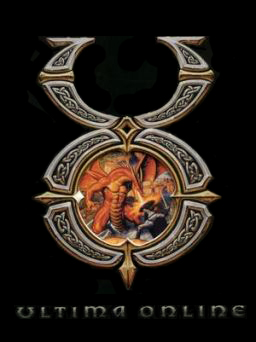
Ultima Online (UO) is a fantasy massively multiplayer online role-playing game (MMORPG) released on September 24, 1997 by Origin Systems.
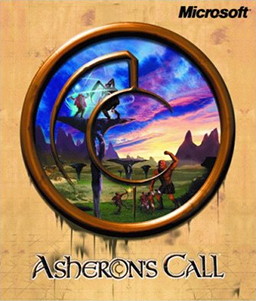
Asheron's Call (AC) was a fantasy massively multiplayer online role-playing game (MMORPG) for Microsoft Windows PCs, developed and published by Turbine Entertainment Software. Though it was developed by the Turbine team, it was published as a Microsoft title until 2004. The game was set on the island continent of Dereth and several surrounding smaller islands and archipelagos on the fictional planet of Auberean. The game was played in a large seamless 3D virtual world which could host thousands of players' characters at a time.
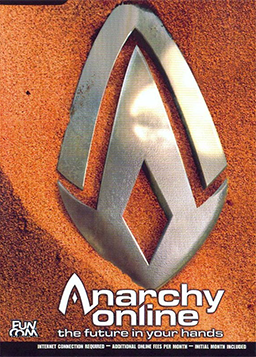
Anarchy Online is a massively multiplayer online role-playing game (MMORPG) published and developed by Norwegian video game development company Funcom. Released in June 2001, the game was the first in the genre to include a science-fiction setting, dynamic quests, instancing, free trials, and in-game advertising. The game's ongoing storyline revolves around the fictional desert planet Rubi-Ka, wherein a valuable mineral known as Notum is found. Players assume the role of a new colonist to Rubi-Ka. With no specific objective to win Anarchy Online, the player advances the game through the improvement of a character's skills over time. After more than 20 years, Anarchy Online has become one of the oldest surviving games in the genre.

Dark Age of Camelot is a massively multiplayer online role-playing game released in October 2001 in North America, and in January 2002 in Europe. The game combines Arthurian lore, Norse mythology, and Celtic mythology with high fantasy. It is set in the period after King Arthur's death, when his kingdom has split into three realms, which are in a constant state of war with each other. Dark Age of Camelot includes both player versus environment (PvE) and realm versus realm (RvR) combat.
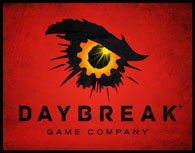
Daybreak Game Company LLC is an American video game developer based in San Diego. The company was founded in December 1997 as Sony Online Entertainment, a subsidiary of Sony Computer Entertainment, but was spun off to an independent investor in February 2015 and renamed Daybreak Game Company. On December 1, 2020, Daybreak Game Company entered into an agreement to be acquired by Enad Global 7.

An Elder Scrolls Legend: Battlespire is an action role-playing video game developed and published by Bethesda Softworks, set in the world of The Elder Scrolls.
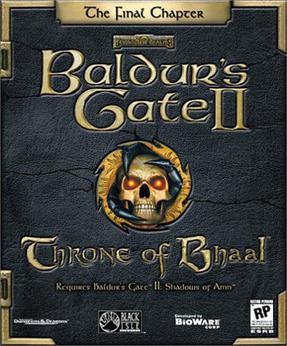
Baldur's Gate II: Throne of Bhaal is a 2001 expansion pack for the role-playing video game Baldur's Gate II: Shadows of Amn. It adds a multi-level dungeon called Watcher's Keep to the game and completes the main plot. There are several new weapons, a higher level cap, a further refined Infinity graphics engine, and new class-related features and magical skills. The novelization of the game was written by Drew Karpyshyn and released in September 2001.

Nox is an action role-playing game developed and published by Westwood Studios and Electronic Arts in 2000 for Microsoft Windows. It details the story of Jack, a young man from Earth who is pulled into a high fantasy parallel universe and has to defeat the evil sorceress Hecubah and her army of necromancers to return home. Depending on the player's choice of character class at the beginning of the game, the game follows three largely different linear storylines, each leading to its unique ending.
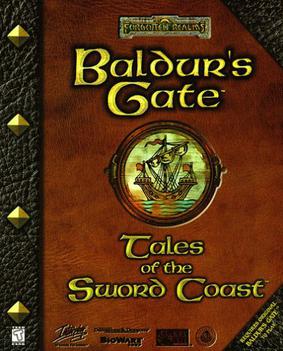
Baldur's Gate: Tales of the Sword Coast is an expansion pack of the fantasy role-playing video game Baldur's Gate. Developed by BioWare and published by Interplay, it adds 20 to 30 extra hours of gameplay, including the addition of four areas and minor tweaks to some of the mechanics. The expansion consists of four notable quests that take place within the same game world as Baldur's Gate, and sees players taking their character and their party of companions across the Sword Coast, from travelling to a distant island, to exploring the fortress dungeon of a dead dwarf. Tales of the Sword Coast sold 600,000 units by 2003.
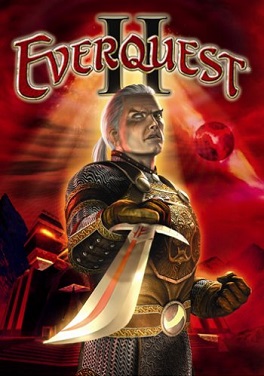
EverQuest II is a 3D fantasy massively multiplayer online role-playing game (MMORPG) originally developed and published by Sony Online Entertainment for Microsoft Windows PCs and released in November 2004. It is the sequel to the original EverQuest, released five years earlier, and features updated graphics and more streamlined gameplay compared to the previous entry, as well as an abundance of voice acting with contributions from actors such as Christopher Lee and Heather Graham. In February 2015, Sony Online Entertainment's parent corporation Sony Computer Entertainment sold it to investment company Inception Acquisitions, where it continues to develop and publish the game under its new name, Daybreak Game Company.
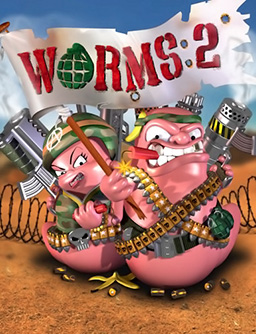
Worms 2 is a 1997 artillery tactical game developed and published by Team17 and released for Windows. It is part of the Worms series and a sequel to the 1995 game Worms. As with the first game, players control their team of worms in combat against each other, using a wide collection of rockets, grenades, firearms, explosives, and air strikes, some eclectic and others bizarre. Also as with the first game, the objective is to eliminate all opposing worms and become the sole surviving team.
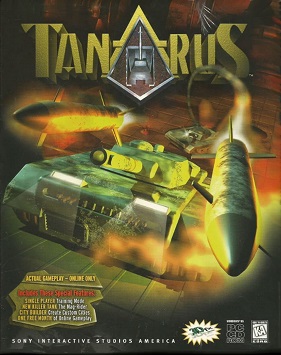
Tanarus was a 1997 online-only multiplayer first-person shooter video game developed by Verant Interactive and published by Sony Interactive Studios America for Windows. It is unusual for not being released on any PlayStation console, despite Sony Computer Entertainment owning the rights to the game. Originally titled Armorgeddon, Verant was forced to change the name when another game with that name was discovered. It was released in late 1997. Verant would later gain recognition by developing EverQuest for Sony Online Entertainment. The game was included in Sony Online Entertainment's Station Exchange program in 2007, and shut down on June 10, 2010.
The Mystere incident was an EverQuest controversy revolving around a player named "Mystere", banned from the game by Verant over a controversial role-playing story.
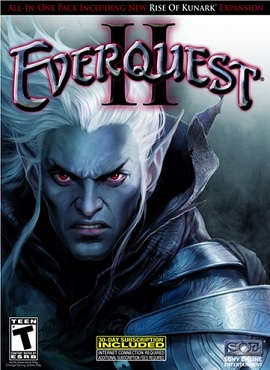
EverQuest II: Rise of Kunark is the fourth EverQuest II expansion pack from Sony Online Entertainment. The expansion pack introduces a new continent, Kunark; a new player race, the Sarnak; and raises the level cap for adventure, tradeskills and guilds to 80.

Nineteen full expansions for the MMORPG EverQuest II have been released, as well as three Adventure Packs.

Diablo II: Lord of Destruction is an expansion pack for the hack and slash action role-playing game Diablo II. Unlike the original Diablo's expansion pack, Diablo: Hellfire, it is a first-party expansion developed by Blizzard North.

Diablo is an action role-playing video game developed by Blizzard North and released by Blizzard Entertainment in January 1997, and is the first installment in the video game series of the same name.

Thirty-one full expansions for the MMORPG EverQuest have been released. Initially, expansions were shipped in boxes to stores, but were later put for sale on digital marketplaces. The retail versions often come packaged with a bonus feature such as a creature that the player can put in their in-game house.
The D.I.C.E. Award for Role-Playing Game of the Year is an award presented annually by the Academy of Interactive Arts & Sciences during the D.I.C.E. Awards. "This award honors a title, single-player or multi-player, where an individual assumes the role of one or more characters and develops those characters in terms of abilities, statistics, and/or traits as the game progresses. Gameplay involves exploring, acquiring resources, solving puzzles, and interacting with player or non-player characters in the persistent world. Through the player's actions, his/her virtual characters' statistics or traits demonstrably evolve throughout the game". All active creative/technical, business, and affiliate members of the Academy are qualified to vote for this category. The award initially had separate awards for console games and computer games at the 1st Annual Interactive Achievement Awards in 1998, with the first winners being Final Fantasy VII for console and Dungeon Keeper for computer. Throughout the history of this category, there have been numerous mergers and changes for role-playing related games. The current version was established at the 21st Annual D.I.C.E. Awards in 2018, which was awarded to Nier: Automata.


















